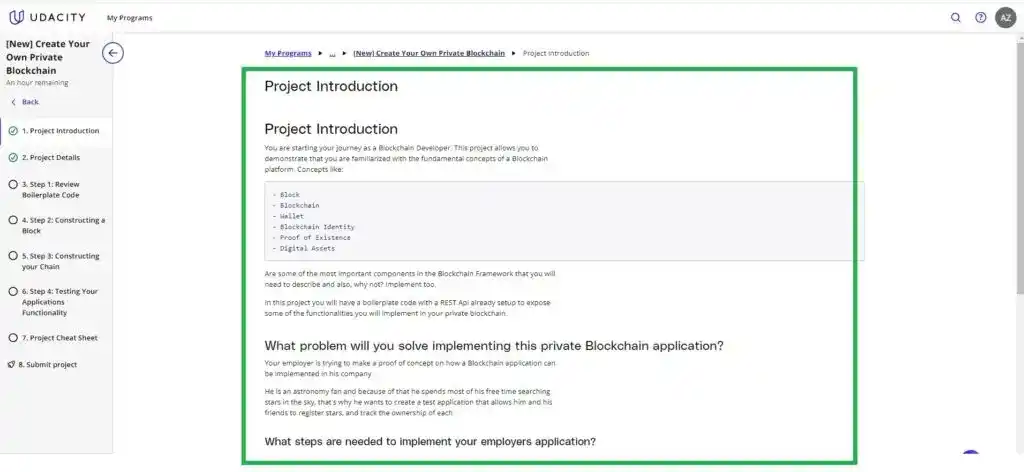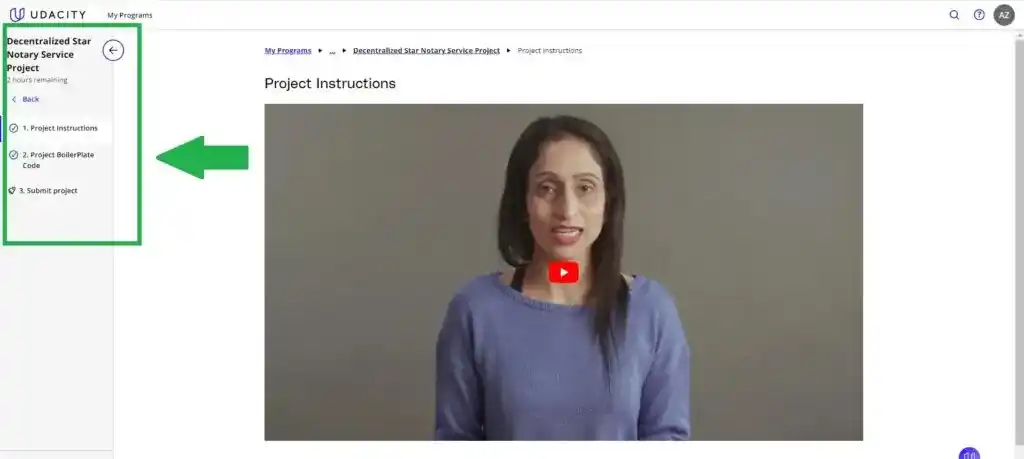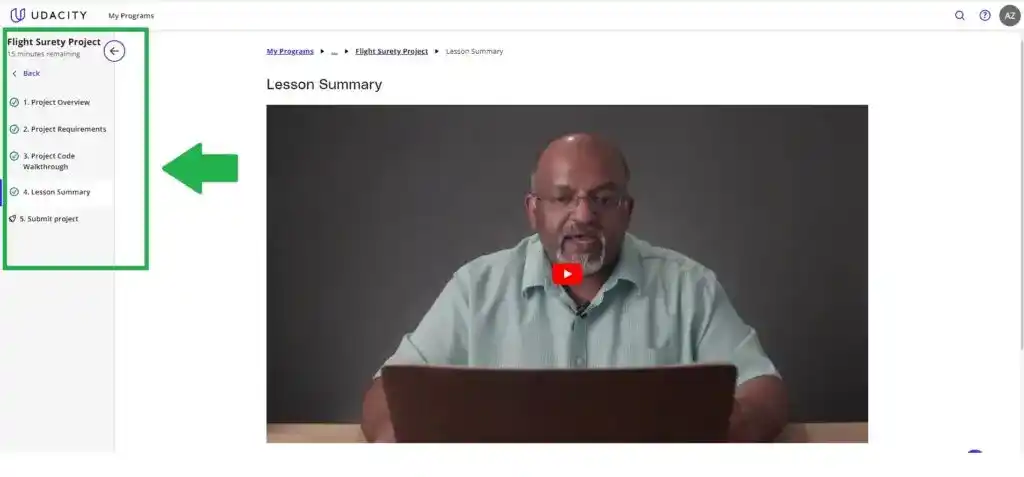So, you are planning to enroll in Udacity Blockchain Developer Nanodegree?… Wait! First, read this Udacity Blockchain Developer Nanodegree Review and learn about Udacity Blockchain Nanodegree Program.
In this review, I will share what I have learned in this Nanodegree Program. Along with that, I will also share how to save a few bucks because it’s an expensive program.
Now, without further ado, let’s get started-
Udacity Blockchain Developer Nanodegree Review
- Content & Projects Covered in Udacity Blockchain Developer Nanodegree
- Who Should Enroll in Udacity Blockchain Developer Nanodegree?
- Are Instructors Experienced?
- How Much Time and Money do You have to Spend in Udacity Blockchain Developer Nanodegree?
- How to get a Discount on Udacity Blockchain Developer Nanodegree?
- What did I like about Udacity Blockchain Developer Nanodegree?/Pros
- What I didn’t like about Udacity Blockchain Developer Nanodegree?
- Is Udacity Blockchain Developer Nanodegree Worth It?
- Conclusion
Your primary reason for enrolling in the program is the Nanodegree Content…Right?…That’s why I will start the Udacity Blockchain Developer Nanodegree Review with the content and projects covered.
Content & Projects Covered in Udacity Blockchain Developer Nanodegree
When I enrolled in this Nanodegree program, after paying the enrollment fees, they asked me to answer a few questions-

I clicked on the “Let’s go” button and answered the questions. These questions were related to my goals regarding Udacity Blockchain Developer Nanodegree.
The best thing I found in this Nanodegree program was its balance between theory and projects. In most programs, the instructors cover only theoretical concepts. But in Udacity Blockchain Developer Nanodegree, there were 4 courses and 4 projects, which was very unique.
After every course, there was one project which I had to finish before moving to the next course. This method of teaching cleared doubts and forced me to rethink whatever I have learned in the theoretical part.

Now, let’s see what concepts are covered in these 4 courses and what are the 4 projects.
Course 1- Blockchain Fundamentals

This was the first course. This course was divided into 7 lessons and 1 project. In the first lesson, I learned the basics of blockchain such as hashing, blocks, Distributed Peer-to-Peer Networks, Memory pool, Consensus, etc. In this lesson, there was one interview with Kyle Samani, Co-founder and Managing Partner at Multicoin Capital, on the power of blockchains and cryptocurrencies and what it will take for them to impact the world.
Next, I understood how to manage blockchain transactions and what are wallet, wallet types, and private keys, how to restore blockchain identity, how to sign a transaction and Blockchain Transaction Lifecycle.
The instructor of this course also explained the difference between the public testnet and regression testing, the relationship between different stages of the transaction lifecycle using Bitcoin Core, the value of a private blockchain, and how to encode and decode digital assets on a private blockchain.
Throughout the course, the instructor used various examples to explain the concepts. After this course, I had to work on my first project, which was-
Project 1- Create Your Own Private Blockchain

In this project, I had a boilerplate code with a REST API already set up to expose some of the functionalities I will implement in my private blockchain.
I had to create a blockchain application that allows users to register stars, and track the ownership of each. This app was created using Node.js and Javascript programming language.
For this project, I had to perform the following steps-
- Step 1: Review Boilerplate Code
- Step 2: Constructing a Block
- Step 3: Constructing your Chain
- Step 4: Testing Your Applications Functionality
To test your project, I recommend you to use POSTMAN, this tool will help you to make the requests to the API. Overall, this project helped me to understand how the blockchain data model works. Throughout the project, I asked my doubts with my mentor.
After completing this project, my next course was-
Course 2- Ethereum Smart Contracts, Tokens & Dapps

In this course, there were 3 lessons and 1 project. First, I understood what Ethereum is, why it’s important, and how it’s different from other Blockchain platforms. I also learned how to connect to the Ethereum tools and community available to me as an Ethereum blockchain developer.
Next, the instructor explained the basics of Solidity, the language used to develop smart contracts in the Ethereum platform. At the end of this lesson, I used the ERC-20 interface to create my own tokens and then send 10 tokens to Udacity’s Ethereum Address!
At the end of this lesson, I practiced with the tools I need to create a DApp, implemented a Smart Contract to expose the DApp functionalities, and created my ERC-721 token.
After learning these concepts, I had to work on the next project, which was-
Project 2- Decentralized Star Notary Service Project

The objective of this project was to practice all the tools I had learned in previous lessons so far to create a DApp. In this project, I had to add more functionalities to my smart contract and deploy it on the public testnet.
The Starter Code had already implemented the functionalities I implemented in the StarNotary (Version 2) exercise and had comments in all the files I need to implement my tasks.
Throughout this project, Udacity provided a Technical Mentor Support feature. Which was very helpful. After completing the project, I had to submit it for review. The reviewer checked the project personally and gave me feedback.
Course 3- Blockchain Architecture

In this course, there were 6 lessons and 1 project. First, I learned the basics of Supply Chain Management. Next, I learned the architecture of blockchain, and then use this to inform how we plan and design a blockchain solution.
After that, the instructor explained the concept of Supply Chains with Smart Contracts. In this lesson, I got hands-on and started outlining, diagramming, and coding a supply chain for myself. I went through a series of challenges meant to help me think through how to provide that new functionality to my users.
In the next lesson, I learned about Blockchain Privacy and techniques to protect and enhance the privacy of blockchain applications. I learned various new concepts such as hashing, Merkle trees, ring signature, zero-knowledge proof, ZK snacks, and differential privacy.
The last two lessons were on Smart Contract Security and Distributed File Systems. The best thing I found in the Nanodegree program was the instructor’s method of explanation. They made complex topics easy to understand.
Project 3- Ethereum Dapp for Tracking Items through Supply Chain

In this project, I had to create a DApp supply chain solution backed by the Ethereum platform. I had to architect smart contracts that manage specific user permission controls as well as contracts that track and verify a product’s authenticity.
There were 5 parts if this project-
- Part 1-Plan the project with write-ups
- Part 2- Write smart contracts
- Part 3-Test smart contract code coverage
- Part 4-Deploy smart contracts on the public test network
- Part 5: Modify client code to interact with smart contracts
Course 4- Dapp with Autonomous Smart Contracts & Oracles

This was the last course of the Udacity Blockchain Developer Nanodegree. In this course, there were 6 lessons and 1 project. First, I learned the concept of stop loss and how to pause a smart contract. Next, the instructor gave me knowledge of ether and payment fundamentals, the use of the SafeMath library, design patterns for protecting payments, and how to protect smart contracts from a variety of attacks.
After that, I learned the scenarios in which smart contracts need to be upgraded, reviewed the pros and cons of different solutions for handling Smart Contract Upgrades, and worked through the exercises to implement the separation of Data and application contracts, etc.
Next, I articulated the roles of oracles in the blockchain environment, identified the scenarios in which the oracles are necessary, developed smart contracts that securely request, and receive information from oracles, etc.
In the last lesson, I learned how to develop Dapps with great user experiences.
After this course, there was a last project which I had to finish-
Project 4- Flight Flight Surety Project

This project was a flight delay insurance for passengers. This is managed as a collaboration between multiple airlines giving passengers the ability to purchase insurance prior to a flight, and if the flight is delayed due to an airline fault, the passengers are paid 1.5x the amount they paid for the insurance.
There were five main requirements for the project:
- Separation of Concerns
- Airlines
- Passengers
- Oracles
- General
This project helped me to learn how to develop DApps with great user experience, server code, and blockchain using modern techniques.
You can take help from the Technical mentor support throughout the project.

So, these are the 4 courses and 4 projects of Udacity Blockchain Developer Nanodegree.
If you ask me how was the content and projects of Udacity Blockchain Developer Nanodegree, I would say it was worth it. The course content was well-structured and advanced. The instructors of the Nanodegree program explained each concept visually and easily.
The projects covered in this Nanodegree Program were based on real-world problems. And these projects will be helpful to your resume.
Now, the next most important point you must clear before enrolling in Udacity Blockchain Developer Nanodegree is the Prerequisites.
Who Should Enroll in Udacity Blockchain Developer Nanodegree?
This Nanodegree program is not for beginners with no previous knowledge of object-oriented programming and the front end and back end of a web application with JavaScript.
If you can create and consume data using a remote API and work with asynchronous JavaScript code, then this Nanodegree is good for you.
When you enroll in the Nanodegree Program, you will get elective courses too. And in these elective courses, you can learn these topics. But it’s better to have previous knowledge of these concepts.
Without having knowledge of these concepts, I would not suggest this Udacity Blockchain Developer Nanodegree.
Now, let’s see how are the instructors of this Nanodegree Program-
Are Instructors Experienced?
- Brandy Camacho- Founder of Network Designs, specializing in architecting software solutions.
- Jessica Lin– Biomedical engineering degree from Cornell University.
- Joe Nyzio-Content developer on the Data Analyst, Tech Entrepreneur, and Business Analyst Nanodegree programs.
- Rachna Ralhan– Previously worked for companies such as Intel, AMD, Cypress, and Xilinx Semiconductors.
- PK Rasam– Founder and Chief Blockchain Officer at LINCD.
- Nik Kalyani– Entrepreneur and blockchain architect.
- Elena Nadolinski– Heads down building a new privacy cryptocurrency.
As you saw, all instructors are experienced and knowledgeable. And learning from such instructors is amazing and helpful. That is the reason I love Udacity.
Now, let’s see the price and duration of the Udacity Blockchain Developer Nanodegree.
How Much Time and Money do You have to Spend in Udacity Blockchain Developer Nanodegree?
According to Udacity, the Udacity Blockchain Developer Nanodegree program will take 4 months to complete if you spend 10 hours per week. And for 4 months they cost around $1199. But Udacity offers two options- One is either pay the complete amount upfront or you can pay monthly installments of $399/month.
I know Udacity Blockchain Developer Nanodegree is expensive compared to other MOOCs. That’s why I would like to share some methods to save some money.
How to get a Discount on Udacity Blockchain Developer Nanodegree?
Most of the time, Udacity offers some discounts. When they offer a discount, it appears something like that-

Visit the Nanodegree Page.
As you can see Udacity is offering a “Personalized Discount”.
So, you click on the “Personalized Discount” option. And you will be redirected to the next page where Udacity will ask you to answer two questions.
Answer these questions from the drop-down list. And you will get a 70% off on Udacity Blockchain Developer Nanodegree.
They will provide a unique coupon code. You have to copy this code and paste it at the time of payment. And that’s all, you have to do to get a discount.
Now, I would like to mention What did I like about Udacity Blockchain Developer Nanodegree and what I didn’t like.
What did I like about Udacity Blockchain Developer Nanodegree?/Pros
- The project code review will be done by professionals.
- The projects are clear and concise in their explanation and the mentors are quick to respond to queries.
- The content of the program is up to date and combined with the latest trends and best practices.
- The structure of the program is useful for students. First, you will learn how a blockchain works and how all of that is structured before taking a deeper dive into Ethereum, which means even someone who is not a blockchain enthusiast or never heard of that world before can learn pretty fast.
- The lessons are structured, to help you learn one step at a time, from the basics upwards.
- Udacity provides guidance and additional resources to learn JS and programming.
- Their technical mentor support feature is amazing. Throughout the Nanodegree program, you can ask your mentor and he clears your doubts.
What I didn’t like about Udacity Blockchain Developer Nanodegree?
- The Udacity Nanodegree program is expensive compared to other MOOCs platforms.
- After completing the Nanodegree program, you can’t access the course material. Maybe Udacity does this to avoid misuse.
- Udacity doesn’t have any IOS and android apps. So, you can’t study on your smartphones and outside the house.
I would also like to mention one more feature of Udacity Blockchain Developer Nanodegree, which is Udacity Career Services. Udacity also provided extra courses to improve LinkedIn and GitHub profiles.

Now, after covering all essential points related to Udacity Blockchain Developer Nanodegree, it’s time to answer the-
Is Udacity Blockchain Developer Nanodegree Worth It?
Yes, Udacity Blockchain Developer Nanodegree is worth it for those who can code with object-oriented programming, work with asynchronous JavaScript code, develop the front end and back end of a web application with JavaScript, and create and consume data using a remote API. Udacity Blockchain Developer Nanodegree is not worth it for beginners.
Now it’s time to wrap up this Udacity Blockchain Developer Nanodegree Review.
Conclusion
I hope this Udacity Blockchain Developer Nanodegree Review helped you to decide whether to enroll in this program or not.
If you found this Udacity Blockchain Developer Nanodegree Review helpful, you can share it with others. And if you have any doubts or questions, feel free to ask me in the comment section.
All the Best!
You May Also Be Interested In
10 Best Online Courses for Data Science with R Programming
8 Best Free Online Data Analytics Courses You Must Know in 2025
Data Analyst Online Certification to Become a Successful Data Analyst
8 Best Books on Data Science with Python You Must Read in 2025
14 Best+Free Data Science with Python Courses Online- [Bestseller 2025]
10 Best Online Courses for Data Science with R Programming in 2025
8 Best Data Engineering Courses Online- Complete List of Resources
Thank YOU!
Explore More about Data Science, Visit Here
Though of the Day…
‘ It’s what you learn after you know it all that counts.’
– John Wooden
Written By Aqsa Zafar
Founder of MLTUT, Machine Learning Ph.D. scholar at Dayananda Sagar University. Research on social media depression detection. Create tutorials on ML and data science for diverse applications. Passionate about sharing knowledge through website and social media.

